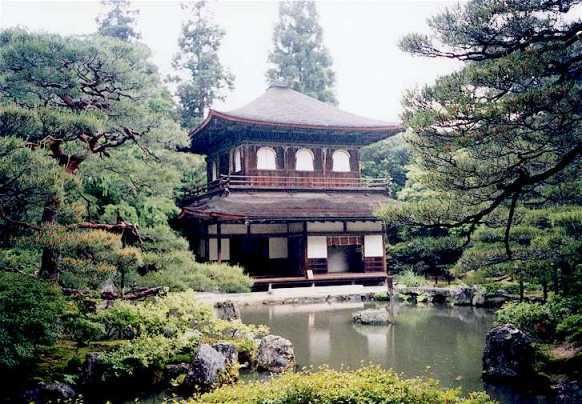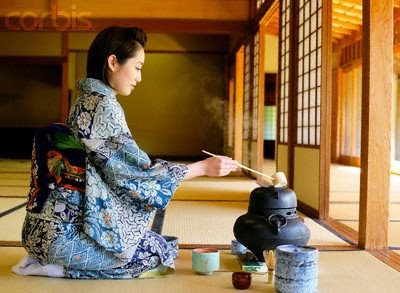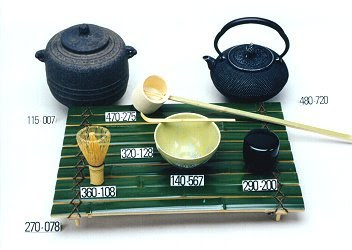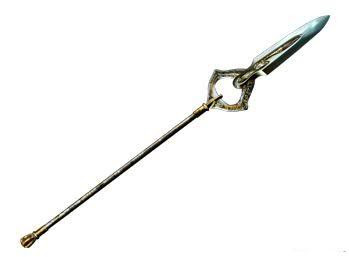Wednesday, December 22, 2010
Nigirizushi
Labels: japanese foods
Posted by iko at 4:25 PM
HISTORY OF SUSHI


It is said that the habit of preserving fish by using rice and vinegar comes from the mountainous region in Southeast Asia. The term sushi comes from the ancient grammatical forms that are no longer used in other contexts; literally, "sushi" means "it (taste) sour", a description of the fermentation process in the history of the roots he said. Basic science behind the fermentation process of fish are packed in rice is that the vinegar produced from the fermentation of rice outlines of amino acids from fish meat. The result is one of the five basic tastes, called umami in Japanese.
Sushi paintings by Hiroshige Ichiyusai from Edo period.
Nigirizushi known in Japan since the Edo period. Prior to the Edo period, most of which are known in Japan, sushi is the kind oshizushi (sushi is formed by pressed-press on the square wooden container). In ancient times, Japanese people may be strong to eat because sushi is always served in large portions. Sushi is as much a right (1 serving) equivalent to 9 not (9 servings) sushi today, or roughly the same with 18 clod sushi (360 grams). One serving sushi ancient times called ikkanzushi have neta consisting of 9 or more types of seafood.
At the end of the Edo period, Japan has become a popular early form of nigirizushi. But nigirizushi already reduced portion sizes to be more easily enjoyed. Sushi expert named Hanaya Yohei create a new kind of sushi which is now called edomaezushi.Namun size large sushi creations such as onigiri. In those days, fish cooling techniques are still underdeveloped. As a result, fish taken from the seas around Japan should be treated first so as not to damage when used as sushi.
Until the 1970's sushi is still a luxury food. Ordinary people in Japan just to eat sushi to celebrate special occasions, and is limited to sushi delivery. In the manga, often portrayed office workers who return home at midnight drunk. By-by who was taken to bribe the wife waiting at home was the sushi. Although the first kaitenzushi restaurants have opened in 1958 in Osaka, its spread to other areas in Japan takes a long time. Eating sushi as an event the whole family come true in the 1980's in line with the increasingly widespread kaitenzushi.
The success kaitenzushi encourage food companies to introduce various kinds of seasonings that allows instant sushi housewives make sushi at home. chirashizushi or temakizushi can be made with instant seasoning plus rice, seafood, tamagoyaki and nori.
Labels: japanese foods
Posted by iko at 4:18 PM
Sushi
The origins of the word sushi is the adjective for the sour taste a sushi written in kanji (酸し?). At first, sushi written in kanji 鲊 is the term for one type of fish preservation is called gyoshō (鱼 醤) a smear the fish with salt, yeast powder (麹, koji?) or the dregs of sake (, kasu). Writing kanji 寿司 sushi use that began in the mid-Edo period is a way of writing ateji (written with other kanji a reads a same).
Labels: japanese foods, Japanese snack food
Posted by iko at 4:16 PM
Saturday, November 20, 2010
GINKAKUJI (TEMPLE SILVER)
originally also a villa, which was built in the area of Higashiyama (Kyoto) by Ashikaga Yoshimasa in the late 15th century (year 1482).
Ginkakuji building is coated with silver & take ZEN temple architectural style called "SHOINZUKURI" a distinguished feature of the building where there is room in Dlm SHOP NO MA "(bed)," CHIGAI FUND "(RAK), &" tatami "which lay neatly, then between rooms separated by dg room "FUSUMA" (sliding door of paper), and the wall,
and used also "AKARISHOJI" (paper window).
This force is then taken as the military-style house became the home of Japanese-style house now
Labels: Traditional Japanese culture
Posted by iko at 11:27 AM
Saturday, October 16, 2010
KOKESHI
Labels: Traditional Japanese culture
Posted by iko at 9:58 PM
"Kodomo no hi" Children's Day Celebrations in Japan
Labels: Traditional Japanese culture
Posted by iko at 7:59 PM
Saturday, June 26, 2010
Ninja Hand Claw Climbing Tigers Spikes
As for self-defense, the metal going all the way around the hand gives you a good area to fend of any sharp blades and if your good you can uses both hands and catch the blade with the spikes. Also the spikes may not be the sharpest but with a good scrape they will cut skin for sure and I'd wager that, that would be the main use of these devices.
Labels: Japanese Weapon
Posted by iko at 9:39 PM
Three Piece Black Ninja Kunai Dagger
 This precisely balanced miniature ninja dagger set features three 6 1/2 inch double edged full tang stainless steel daggers. Each aerodynamic dagger additionally features a resilient non-reflective black finish and tightly wrapped black nylon cord handle. Each handle also has an open ringed pommel for attaching a wrist lanyard of tassel.
This precisely balanced miniature ninja dagger set features three 6 1/2 inch double edged full tang stainless steel daggers. Each aerodynamic dagger additionally features a resilient non-reflective black finish and tightly wrapped black nylon cord handle. Each handle also has an open ringed pommel for attaching a wrist lanyard of tassel.This miniature ninja dagger set comes complete with a durable black nylon sheath designed to accommodate all three daggers.
Japanese Weapon
Labels: Japanese Weapon
Posted by iko at 8:41 PM
GRAPPLING HOOK
Labels: Japanese Weapon, ninja japanese sword
Posted by iko at 8:35 PM
Kendo Bamboo Shinai Practice Sword
 Improved your martial arts skills! This professional practice sword is designed for rigorous training. This item features solid bamboo construction with a leather wrapped grip and tip
Improved your martial arts skills! This professional practice sword is designed for rigorous training. This item features solid bamboo construction with a leather wrapped grip and tipMost of them I have come across on here are mostly about 20 dollars or more.So this is really an excellant deal and I garentee you will be happy with how well made this shinai
Labels: Traditional Japanese Weapons
Posted by iko at 8:32 PM
Wednesday, June 9, 2010
Hattori Hanzo
 Also known as Masashige. The son of a certain Hattori Yasunaga, Hanzo, who would earn the nickname 'Devil Hanzo', served Tokugawa Ieyasu loyally and usefully. His nickname - Devil Hanzo - was not only to pay homage to his skills but also to distinguish him from another Tokugawa 'ninja', Watanabe Hanzo.
Also known as Masashige. The son of a certain Hattori Yasunaga, Hanzo, who would earn the nickname 'Devil Hanzo', served Tokugawa Ieyasu loyally and usefully. His nickname - Devil Hanzo - was not only to pay homage to his skills but also to distinguish him from another Tokugawa 'ninja', Watanabe Hanzo.Hattori, who fought his first battle at the age of 16, went on to serve at Anegawa (1570) and Mikatagahara (1572), but his most valuable contribution came in 1582, following Oda Nobunaga's death.
At that time Tokugawa and his retainers had been staying near Ôsaka and learned of the assassination only just in time to avoid being detained by Akechi Mitsuhide's troops. But they were by no means out of the woods. Mikawa was still a long way away, and Akechi men would be combing the roads for them.
At this point, Hanzo suggested that they take a route through Iga province, as he had ties with the samurai there. In addition, Ieyasu had sheltered survivors from Nobunaga's bloody invasion of that province in 1580 and those who knew of this would certainly be well disposed to offer assistance. Honda Tadakatsu sent Hanzo on ahead, and, as hoped, the Iga men agreed not only to guide them along back roads, but also to provide them with an escort. At length, Tokugawa and his band returned to Mikawa safely. The same could not be said for Anayama Beisetsu, a recent Tokugawa addition who had insisted on taking a different route.
Hanzo was succeded by his son, Masanari, who would be given the title Iwami-no-Kami and whose men would act as the guards of Edo Castle. Hanzo's reputation as a ninja leader who commanded a 200-man strong unit of Iga men has grown to legendary proportions.
Labels: Samurai (侍 or 士)
Posted by iko at 2:17 PM
Date Masamune
 Date Masaume was the eldest son of Date Terumune, a lord of the Rikuzen area of Mutsu. His mother was a daughter of Mogami Yoshimori. Masamune was born in September 1566 at Yonezawa and first went by the name Botenmaru. He recieved the name Tojirou Masamune in 1578 and the following year was married to the daughter of Tamura Kiyoaki. He went on his first campaign in 1581, helping his father fight the Souma family.
Date Masaume was the eldest son of Date Terumune, a lord of the Rikuzen area of Mutsu. His mother was a daughter of Mogami Yoshimori. Masamune was born in September 1566 at Yonezawa and first went by the name Botenmaru. He recieved the name Tojirou Masamune in 1578 and the following year was married to the daughter of Tamura Kiyoaki. He went on his first campaign in 1581, helping his father fight the Souma family. A general war ensued between the Date and Hatakeyama, the Hatakeyama drawing on support from the Satake, Ashina, Soma, and other local clans. The allies marched to within a half-mile of Masamune's Motomiya-jo, assembling some 30,000 troops for the attack. Masamune, having only 7,000 warriors of his owned, prepared a defensive strategy, relying on the series of forts that guarded the approaches to Motomiya. The fighting began on the 17th of November, and did not progress well for the Date. Three of his valuable forts were taken, and one of his chief retainers, Moniwa Yoshinao, was killed in a duel with an opposing commander. The attackers pressed towards the Seto River, which was the last obstacle between them and Motomiya. Date attempted to turn them back at the Hitadori Bridge, but was driven back. Masamune brought his remaining forces within Motomiya's walls, and prepared for what would surely be a gallant but futile last stand. But the next morning, no doubt to the amazed relief of the Date warriors, the main enemy contingent picked up and marched away. These were Satake Yoshishige's men, their lord having received word that in his absence the Satomi had attacked his lands in Hitachi. Apparently this left the allies with fewer men than they believed possible to bring down Motomiya, for they too had retreated by the end of the day. This brush with utter defeat was likely a factor in turning Masamune into the reknowned general he would one day be known as. In his youth, Masamune had suffered a bout with small pox that caused an infection in his right eye-which he plucked out himself. Combined with his early aggressive and unstable demeanor, Masamune would earn the tag 'One-eyed Dragon'. That nickname would stick, but became one of respect.
A general war ensued between the Date and Hatakeyama, the Hatakeyama drawing on support from the Satake, Ashina, Soma, and other local clans. The allies marched to within a half-mile of Masamune's Motomiya-jo, assembling some 30,000 troops for the attack. Masamune, having only 7,000 warriors of his owned, prepared a defensive strategy, relying on the series of forts that guarded the approaches to Motomiya. The fighting began on the 17th of November, and did not progress well for the Date. Three of his valuable forts were taken, and one of his chief retainers, Moniwa Yoshinao, was killed in a duel with an opposing commander. The attackers pressed towards the Seto River, which was the last obstacle between them and Motomiya. Date attempted to turn them back at the Hitadori Bridge, but was driven back. Masamune brought his remaining forces within Motomiya's walls, and prepared for what would surely be a gallant but futile last stand. But the next morning, no doubt to the amazed relief of the Date warriors, the main enemy contingent picked up and marched away. These were Satake Yoshishige's men, their lord having received word that in his absence the Satomi had attacked his lands in Hitachi. Apparently this left the allies with fewer men than they believed possible to bring down Motomiya, for they too had retreated by the end of the day. This brush with utter defeat was likely a factor in turning Masamune into the reknowned general he would one day be known as. In his youth, Masamune had suffered a bout with small pox that caused an infection in his right eye-which he plucked out himself. Combined with his early aggressive and unstable demeanor, Masamune would earn the tag 'One-eyed Dragon'. That nickname would stick, but became one of respect.In the wake of the battle, peace was struck with the Hatakeyama and Soma, although this was to prove short-lived.
In 1589, Date defeated the Soma, and bribed an important Ashina retainer, Inawashiro Morikuni, over to his side. He then assembled a powerful force and marched straight for the Ashina's headquarters at Kurokawa. The Date and Ashina forces met at Suriagehara on 5 June, and Masamune's forces carried the day, Masamune leading a charge against faltering Ashina ranks, and breaking them. Unfortunately for the Ashina, Date men had destroyed their avenue of escape, a bridge over the Nitsubashi River, and those who did not drown attempting to swim to safety were mercilessly put to the sword. By the battle's end, Masamune could count something like 2,300 enemy heads in one of the more bloody and decisive battles of the Sengoku period to happen in the far north.
This would be Date Masamune's last expansionist adventure, however. With the coming of the next year Hideyoshi besieged the Hojo's Odawara Castle. Hideyoshi ordered Date to participate, which he did, though it is said he put off his arrival so that his spies could report on the likely victor. Since the outcome of the siege was obvious, Date presented himself before Hideyoshi and apologized for his lateness. Following the conclusion of the siege, however, Hideyoshi ordered Date to relinquish his newly won holdings in Aizu (perhaps using Date's tardiness as a pretext) and be content with Yonezawa (200,000 koku), a much-reduced income that doubtlessly did not sit so well with Masamune.
In 1592, Date served in Hideyoshi's headquarters at Nagoya on Kyushu during the Korean invasion. Three years later, he found himself implicated in the suspected treason of Toyotomi Hidetsugu and was ordered to pack up and move his household to Iyo on Shikoku, an unthinkable fate (to Date) averted through the good offices of Tokugawa Ieyasu. All in all, it is not surprising that Date readily joined Tokugawa when war came between the latter and Ishida Mitsunari began in 1600. He had already married a son to one of Ieyasu's daughters (an act which in itself had aggravated tensions between Ieyasu and his fellow san-bugyo members) and was likely contemplating how best his remote forces could aid Tokugawa when war began. In the event, he and Mogami Yoshiakira of Dewa held the forces of Uesugi Kagekatsu at bay, with Masamune's first contribution to the war effort being the Siege of Hataya. The battles in the north culminated with Masamune's attack on Fukushima Castle. Date and Mogami's efforts allowed Tokugawa to move west in confidence, and, of course, the campaign culminated in the total victory at Sekigahara in October 1600. In the aftermath, Date's lands were enlarged to 600,000 koku, and he built a new castle town (Aoba-jo) at Sendai.
Labels: Samurai (侍 or 士)
Posted by iko at 2:10 PM
Akechi Mitsuhide
In 1578 an unfortunate incident is said to have occurred involving the Hatano clan of Tamba. Eager to bring them over without further delay, Mitsuhide managed to convince Hatano Hideharu to submit. Unfortunately, Nobunaga later overturned Mitsuhide's promise of safe treatment and had Hideharu executed in 1579. The Hatano responded, as one might expect, by accusing Mitsuhide of treachery, and, the story goes, somehow got ahold of his mother in Ô,mi and executed her in dreadful manner. Mitsuhide, needless to say, bore Nobunaga some ill will. This was enflamed by a series of public insults Nobunaga directed at Mitsuhide that drew even the attention of Western observers. Nonetheless, Mitsuhide was generally well regarded for his talents both on the battlefield and as an administrator.
 In 1582, Nobunaga ordered Mitsuhide to assemble his troops and march to the west, where Hashiba (Toyotomi Hideyoshi) was embroiled in a struggle with the Môri. Instead, Mitsuhide marched on Oda, who was occupying the Honno temple at the time. Nobunaga and his heir Nobutada were killed, and Mitsuhide declared himself the new shogun, however improbably. Mistuhuide may have intimated his intentions just days before when he composed a poem for the renga masters Jôha and Shoshitsu that, while ostensibly written to bring good luck to Hideyoshi's seige of Takamatsu, contained a provactive line that could be interpreted to mean that the Toki (whose name he used from time to time) would rule Japan. At any rate, the sudden defection stunned the Capital region. Akechi worked as quickly as he could, and looted Azuchi Castle so as to reward his men and made friendly gestures towards a bewildered Imperial Court. The Akechi could claim descent from the Toki, and in turn the Minamoto, but, unsurprisingly, this would bear little fruit. Mitsuhide had counted on the support of Hosokawa Fujitaka, with whom he was related to through marriage. This alliance did not pan out as Fujitaka wisely cut his ties with the usurper. It is possible that Mitsuhide also hoped for the support of the Tsutsui, whose relation with Nobunaga had been none too good. Tsutsui Junkei, however, wavered, and in the end joined Toyotomi Hideyoshi. Another grave setback came within days. Mitsuhide had counted on Hideyoshi being tied up with the Môri and thus being unable to promptly respond to Nobunaga's death. Unfortunately, Hideyoshi learned of the assassination before the Môri, and signed a peace treaty with that clan. This allowed him to force-march back east at a rapid pace, catching Mitsuhide off guard. Mitsuhide and Hideyoshi clashed at Yamazaki, (See TOYOTOMI HIDEYOSHI for a more detailed description of Yamazaki) and though the former fought bravely, his troops were defeated. Mitsuhide himself was killed while attempting to make his way to Sakamoto, which was held by his brother, Hidemitsu (1560-1582). Soon afterwards, Sakamoto was reduced by Hori Hidemasa (1553-1590).
In 1582, Nobunaga ordered Mitsuhide to assemble his troops and march to the west, where Hashiba (Toyotomi Hideyoshi) was embroiled in a struggle with the Môri. Instead, Mitsuhide marched on Oda, who was occupying the Honno temple at the time. Nobunaga and his heir Nobutada were killed, and Mitsuhide declared himself the new shogun, however improbably. Mistuhuide may have intimated his intentions just days before when he composed a poem for the renga masters Jôha and Shoshitsu that, while ostensibly written to bring good luck to Hideyoshi's seige of Takamatsu, contained a provactive line that could be interpreted to mean that the Toki (whose name he used from time to time) would rule Japan. At any rate, the sudden defection stunned the Capital region. Akechi worked as quickly as he could, and looted Azuchi Castle so as to reward his men and made friendly gestures towards a bewildered Imperial Court. The Akechi could claim descent from the Toki, and in turn the Minamoto, but, unsurprisingly, this would bear little fruit. Mitsuhide had counted on the support of Hosokawa Fujitaka, with whom he was related to through marriage. This alliance did not pan out as Fujitaka wisely cut his ties with the usurper. It is possible that Mitsuhide also hoped for the support of the Tsutsui, whose relation with Nobunaga had been none too good. Tsutsui Junkei, however, wavered, and in the end joined Toyotomi Hideyoshi. Another grave setback came within days. Mitsuhide had counted on Hideyoshi being tied up with the Môri and thus being unable to promptly respond to Nobunaga's death. Unfortunately, Hideyoshi learned of the assassination before the Môri, and signed a peace treaty with that clan. This allowed him to force-march back east at a rapid pace, catching Mitsuhide off guard. Mitsuhide and Hideyoshi clashed at Yamazaki, (See TOYOTOMI HIDEYOSHI for a more detailed description of Yamazaki) and though the former fought bravely, his troops were defeated. Mitsuhide himself was killed while attempting to make his way to Sakamoto, which was held by his brother, Hidemitsu (1560-1582). Soon afterwards, Sakamoto was reduced by Hori Hidemasa (1553-1590).While Akechi would become one of the most famous men in Japanese history, if only for his treachery, the exact causes for his dramatic attack on Nobunaga, and what he hoped to accomplish once this was done, will most likely remain a mystery.
Labels: Samurai (侍 or 士)
Posted by iko at 2:02 PM
Monday, March 22, 2010
Wakizashi 脇差
Labels: Traditional Japanese Weapons
Posted by iko at 2:11 PM
Sunday, March 7, 2010
How to take care Japanese sword (simple)
How to take care of the sword after an Iaido practices is being explained easily with
this topic. Take care of the sword after the practices always. If the care for the sword
is neglected, a sword rusts in the sweat of the hand and so on.
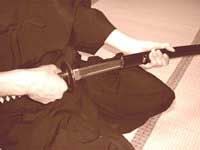
(1) Face an edge toward the top, and pull out a sword slowly from the sheath. Then,
be careful not to damage a sheath.
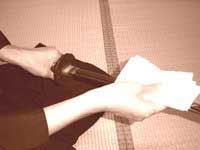
(2) Hold the sword pulled out with your left hand. Then, remove old oil and dust from
the sword with the Nuguigami. Put a Nuguigami on the Mune of the sword when
wiping the sword, and wipe the sword toward the top from the bottom.
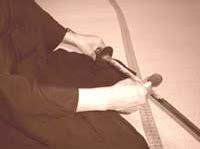
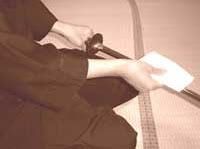
(3) Pat a sword body with the Uchiko. Powder equally on the both sides of the sword
body. Then, wipe the white powder with the new Nuguigami which is different
from the paper used some time ago. Repeat this handle, and remove the blurs of
the oil completely.
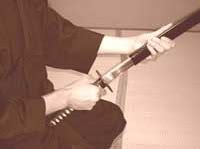
(4) Apply new oil to the sword body, and put away a sword to the sheath. Put the
oiling paper on the Mune of the sword when oiling the sword, and oil the sword
toward the top from the bottom. Don't oil a sword in quantity very much. Oil equally
the both sides of the sword body.
If the care for the sword is finished, put a sword in the sword bag, and keep it. Keep a
sword in the place where it dries in the shade.
How to take care of the sword of this topic isn't perfect. Therefore, remove the hilt
once in three months, and care for the tang(Nakago) and so on.
Labels: - exercise and how to care for Japanese Sword
Posted by iko at 7:57 PM
Saturday, March 6, 2010
Care of a sword-Mekuginuki
Mekuginuki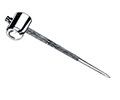
This is used to remove the Mekugi of the sword. The Mekuginuki can remove(thrust) the Mekugi with the sharp part. Moreover, the Mekuginuki can put(push) the Mekugi in the surface of a part like a hammer.
Labels: - exercise and how to care for Japanese Sword
Posted by iko at 8:54 PM
Friday, March 5, 2010
Care of a sword-Neguigami
Neguigami
Labels: - exercise and how to care for Japanese Sword, Japanese Weapon
Posted by iko at 7:49 PM
Thursday, March 4, 2010
Care of a sword-Uchiko
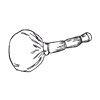
The thing which made a whetstone powder-shaped is being packed into the Uchiko. White powder appears from the Uchiko when a sword body is struck with the Uchiko. There are two use purposes. The Uchiko removes the old oil which sticks to the sword body. Furthermore, the Uchiko beautifies the surface of the sword
Labels: - exercise and how to care for Japanese Sword, Japanese Weapon
Posted by iko at 7:48 PM
Care of a sword-Oil
 Oil is used to prevent the rust of the Japanese sword. Oil makes a film of the oil between the sword body and the air, and it prevents the oxidization of the sword body. Oil dries inabout five months. Therefore, reprint it in the new oil once in three months. Oil a sword body by using the thing which cut a Nuguigami and flannel into the suitable size. (The absorbent cotton and the leather of the deer as well are being used.)
Oil is used to prevent the rust of the Japanese sword. Oil makes a film of the oil between the sword body and the air, and it prevents the oxidization of the sword body. Oil dries inabout five months. Therefore, reprint it in the new oil once in three months. Oil a sword body by using the thing which cut a Nuguigami and flannel into the suitable size. (The absorbent cotton and the leather of the deer as well are being used.)Labels: Japanese Weapon
Posted by iko at 6:49 PM
Tuesday, February 23, 2010
History of Japanese Art of tea ceremony 2
In the year 1906, the famous painter named Okakura Tenshin (Kakuzo) published a book called The Book of Tea in the United States. Entering the early 20th century, the term sado or chadō began widely used in conjunction with the term cha no yu or Chanoyu.
Labels: Art of tea ceremony, japanese foods
Posted by iko at 5:43 PM
Monday, February 22, 2010
History of Japanese Art of tea ceremony 1
Among city residents interested in learning the tea ceremony was greeted with open arms by the flow Sansenke (three flow Senke: Omotesenke, Urasenke and Mushanokōjisenke) and fractional flow Senke.
The popularity of the tea ceremony led to the number of students became more and more that needs to be regulated by a system. Iemoto seido is born of regulatory requirements set hierarchy between teachers and students in the traditional arts of Japan.
Joshinsai (teacher-generation Omotesenke flow 7) and Yūgensai (teacher-generation Urasenke stream 8) and a senior student named Joshinsai Kawakami Fuhaku (Edosenke first generation) and then introduce a new method of learning the tea ceremony, called Shichijishiki. The tea ceremony can be learned by many students together with Shichijishiki method.
Various streams of tea trying to attract the interest of all people to learn the tea ceremony, so the tea ceremony has become popular throughout Japan. The tea ceremony is increasingly popular among the people is also an adverse impact on the tea ceremony which began seriously do not like playing.
At the end of the Tokugawa shogunate, perfecting principle Naosuke Ii Ichigo ichie (one life one chance). At this time, the tea ceremony which is now known as sado successfully enhanced by the addition of a real systematic procedures such as otemae (preparation techniques, penyeduhan, serving tea) and each school to set the basic style and abstract philosophy.
Entering the end of the Edo period, the tea ceremony matcha enhanced use of samurai became unpopular among the public because of the rigid etiquette. Society generally wants a tea that can be enjoyed with more ease. At that time, people began paying attention to the ordinary sencha tea enjoyed everyday. Tea ceremony which use also began sencha desirable people. Based on the request of many, Baisaō priest who is also known as Ko flow Yūgai create a tea ceremony with sencha (Senchadō) which became established and popular in literary circles.
Labels: Art of tea ceremony, japanese foods
Posted by iko at 11:41 PM
Art of tea ceremony
In general, the tea ceremony using matcha powder tea made from green tea are ground smooth. The tea ceremony is called matcha matchadō use, whereas when using a type of sencha green tea called senchadō.
Tea is not just poured with hot water and drunk, but as art in the broadest sense. The tea ceremony reflects the personality and knowledge covering a host of other life goals, ways of thinking, religion, appreciation of the tea ceremony equipment and how to put art in the tea ceremony room (chashitsu) and the general knowledge of art that depends on the flow tea ceremony that followed.
Labels: Art of tea ceremony, japanese foods
Posted by iko at 11:37 PM
Japanese Tea ceremony
The specially prepared by people who study the art of tea ceremony and enjoyed a group of guests at a special room for tea called chashitsu. The host is also responsible for preparing a pleasant situation for guests such as choosing a mural (kakejiku), flowers (chabana), and a ceramic bowl in accordance with the seasons and the status of an invited guest.
Labels: japanese foods
Posted by iko at 5:48 PM
Sunday, February 21, 2010
Japanese Sword from Late Kamakura
Labels: Traditional Japanese Weapons
Posted by iko at 9:25 PM
Japanese Sword from Mid-Kamakura
Labels: Traditional Japanese Weapons
Posted by iko at 5:20 PM
Saturday, February 20, 2010
Japanese Sword Late Heian to Early Kamakura
Labels: Traditional Japanese Weapons
Posted by iko at 8:58 PM
Firearms Japanese Army during World War II
But what is the secret behind your success? Because senjatakah advantage? I do not know, because it was the weapon used by the Japanese army at that time was the same weapon as they defeated the Russian army in 1905.
Apparently, the secret is the chrysanthemum symbol printed on each gun, so the Japanese soldiers burned the spirit to sacrifice themselves on the battlefield.
Below are interesting documentary about it, please enjoy ...
Labels: Japanese Weapon
Posted by iko at 7:38 PM
Jõkotõ (Jokoto)
Jõkotõ are straight Japanese swords with no curvature. They are usually constructed in the hira-zukuri and kiriha-zukuri styles. It is] thought that the shift from straight blades to Japanese swords with curvature happened around the mid to late Heian period (794-1184). This was during the mid 10th century: about the time Taira Masakado and Fujiwara Sumitomo rebelled against the government in the Johei (931-938) and Tengyo (938-947) eras. Blades before these are continental style blades called jõkutõ, and were brought to Japan from the Asian continent.
Examples of theseJapanese swords have been excavated from Kofun period tombs, and some still reside in the Shosoin Imperial Repository, Nara
Labels: Traditional Japanese Weapons
Posted by iko at 5:52 PM
The Japanese Sword; Historical Changes in Shape

1. Jõkotõ (Chokutõ) Ancient and Heian period
2. Late Heian to Early Kamakura
3. Mid-Kamakura
4. Late Kamakura
5. Nanbokucho
6. Early Muromachi
7. Late Muromachi
8. Aizuchi-Momoyama
9. Mid-Edo
10. Edo period Genroku era
11. Edo, Bakamatsu
12. Meiji and onwards
Labels: Japanese Weapon, Traditional Japanese Weapons
Posted by iko at 7:45 AM
Ame no nuhoko
Kanji characters used in American-no-nuboko in correctly pronounce ame-(no)-Numa-hoko, with Numa means "Marsh, swamp, or bog". This will be translated as "heavenly spear swamp".
Labels: Japanese Weapon, Traditional Japanese Weapons
Posted by iko at 7:36 AM
Kusanagi no Tsurugi

Kusanagi no Tsurugi is a legendary Japanese sword that is important for the history of Japan and is just as important as the history of the sword Excalibur for the British people, and is one of the three Imperial Regalia of Japan.
Kusanagi no Tsurugi was originally called Ama-no-Murakumo-no-Tsurugi ( "Sword of the Gathering Clouds of Heaven") but his name later changed to become more popular Kusanagi-no-Tsurugi ( "Grass Cutting Sword").
Labels: Japanese Weapon, Traditional Japanese Weapons
Posted by iko at 7:34 AM
Tonbogiri
Labels: Japanese Weapon, Traditional Japanese Weapons
Posted by iko at 7:22 AM
Wednesday, February 10, 2010
Clothing used by the ninja in the museum Iga-ryu Ninja
Labels: ninja japanese sword, Traditional Japanese Weapons
Posted by iko at 1:28 AM

